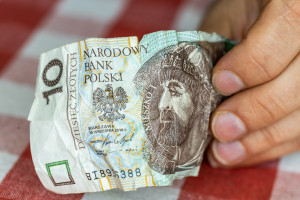A ban has been introduced in Denmark and France. In Poland, its use is still permitted.

- Allura red (E129) is a synthetic dye used in the food, cosmetics and pharmaceutical industries.
- In many European countries, including France and Denmark, allura red has been banned due to the risk of negative health effects.
- In Poland, the dye is still widely used, even though experts urge caution and promote natural alternatives.
"Fakt" reminded that Allura Red, also known as E129 or Red 40, is a synthetic dye used to impart a red color. Due to its high resistance to light and high temperatures, it has been used for years by producers of sweets, beverages, and dairy desserts.
In Poland, it can be found in jellies, gummies, breakfast cereals, juices, cookies, icings, and even in some medicines and cosmetics .
It's the prevalence of this additive that raises the greatest concern. Research conducted in scientific centers has shown that E129 can affect intestinal microflora and cause inflammation of the digestive system.
Intestinal disturbances and allergic reactions have also been observed in animal tests. Although carcinogenicity has not been proven, scientists indicate that the dye's chemical structure resembles p-cresidine, a compound suspected of having such properties.
However, its impact on children is of particular concern. As early as 2007, British research found a link between the consumption of red dyes and hyperactivity and attention problems . Since then, some European countries have begun restricting their use.
Banned in Europe, allowed in PolandIn France, Denmark, Norway, and Iceland, Allura Red was withdrawn from the market. It was determined that the health risks outweighed the aesthetic benefits of dyeing the products.
In the European Union, the ingredient E129 is still legal, but its presence must be clearly labeled . Manufacturers are required to state that the dye "may have an adverse effect on activity and attention in children."
This warning is intended to help parents make more informed purchasing decisions, although many still fail to pay attention to the fine print on packaging.
Experts urge consumers to choose products with natural dyes, which are safer and contain beneficial nutrients . These include betanin from beets, anthocyanins from chokeberries and blueberries, lycopene from tomatoes, and carotenoids from carrots, pumpkins, and peppers.
According to European Food Safety Authority (EFSA) guidelines, the acceptable daily intake of E129 is 0-7 mg per kilogram of body weight. However, a growing number of scientists recommend significantly limiting this nutrient in the diet, especially among children, allergy sufferers, and asthmatics.
Copyrighted material - reprint rules are specified in the regulations .
rynekzdrowia










